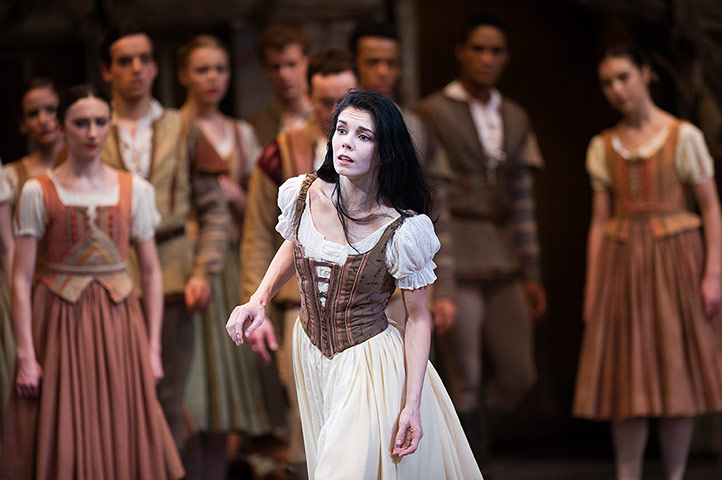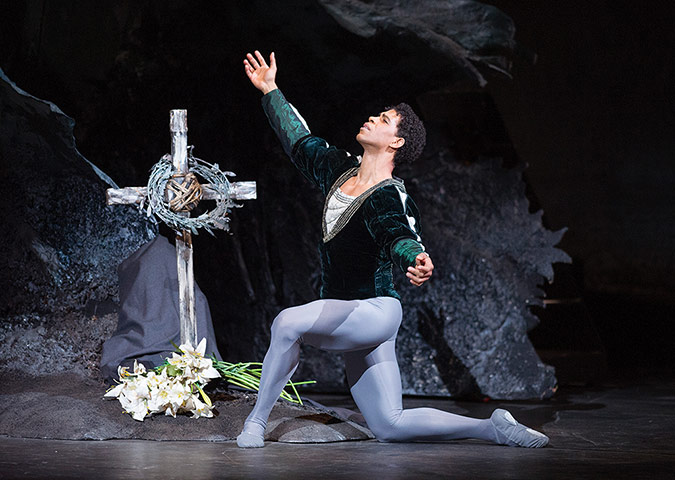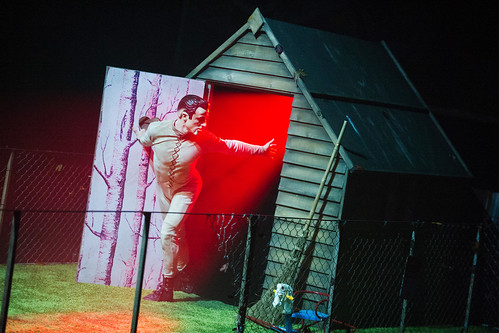I saw two performances of Giselle this season. The first, on January 20th, saw Sarah Lamb make her debut in the role, with Steven McRae (also new to the role) stepping in last minute to replace Rupert Pennefather as Albrecht. The second, on January 27th at a live cinema screening, featured the much talked about partnership of Natalia Osipova and Carlos Acosta. It was the first time I had the opportunity to see the same production twice in one season. The differences between the two were striking.
In Act I, Lamb danced a sweet Giselle. She is easy to like, and I'm convinced that Albrecht, like the audience, can't help falling at least little bit in love with her. She seems genuinely naive, and it is not hard to understand her complete shock when she learns of his betrayal. Osipova, on the other hand, is a more complicated Giselle. There seem to be a number of things on her mind: her passion for dancing, her weak heart, her worried mother. Her dancing is sublime, of course. However, at times it felt like these things were more important to her than Albrecht.
 |
| Nathalia Osipova as Giselle Photograph: Tristram Kenton for the Guardian |
Steven McRae as Albrecht is utterly convincing. Initially, we perceive him as a young guy looking to have some fun, possibly to escape the dreariness of court life (he is engaged to the snooty Bathilde - brilliantly played both by Nathalie Harrison and Christina Arestis). However, his growing affection for Giselle is sincere, and when she dies his grief is genuine. McRae portrays the emotional complexity of this poignant moment with such subtlety that we are left reeling.
Acosta is not so convincing. His Albrecht is more regal, arrogant, and it is harder to sympathize with him. He does not seem to genuinely fall for Giselle, his grief is not authentic.
In Act II, both Claudia Dean and Hikaru Kobayshi are impressive in the role of Queen of the Wilis. Claudia Dean, "only" an artist, already awed us earlier in the season as the Chosen Maiden in The Rite of Spring. She is definitely someone to watch!
Osipova's Giselle is a bit harsh (her muscular arms and rather big, floppy hands do not help here); Acosta's Albrecht a little self-indulgent. At one point, forced to dance by the Wilis, he collapses with exhaustion, only to rise again with a flourish of his hand and look on his face that clearly expects applause (though, I must admit, he gets it). Lamb and McRae, on the other hand, are perfect together. I greatly look forward to seeing them together again in the upcoming production of Sleeping Beauty.
In Act II, both Claudia Dean and Hikaru Kobayshi are impressive in the role of Queen of the Wilis. Claudia Dean, "only" an artist, already awed us earlier in the season as the Chosen Maiden in The Rite of Spring. She is definitely someone to watch!
 |
| Carlos Acosta as Albrecht Photograph: Tristram Kenton for the Guardian |
While the hype around Natalia Osipova is by no means unjustified, I think it a shame that Sarah Lamb is receiving so little attention for her beautiful performance (I have yet to read a review in the papers AND no one seems to have taken any photographs!). Her Giselle is the one that continues to haunt me.










